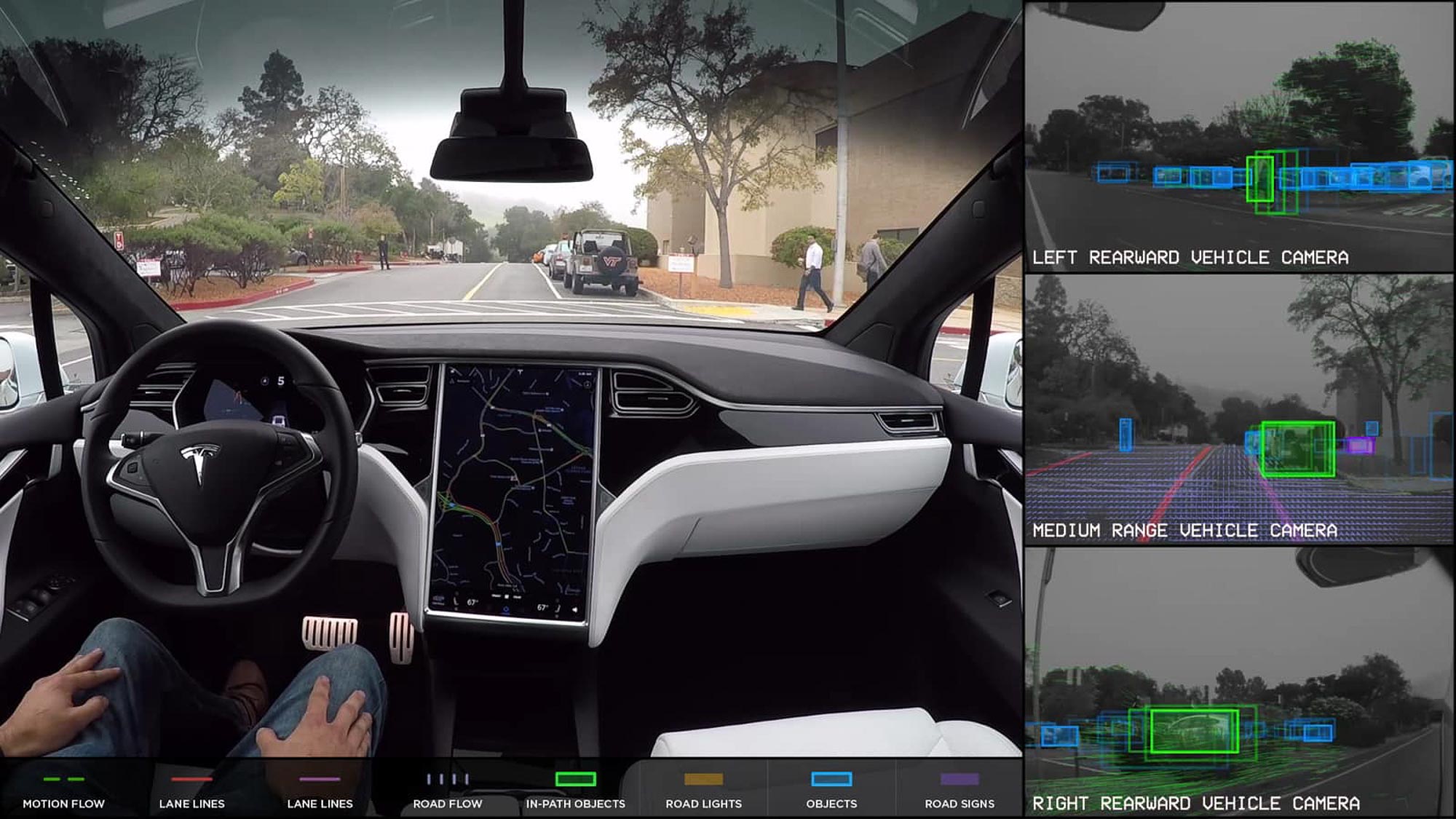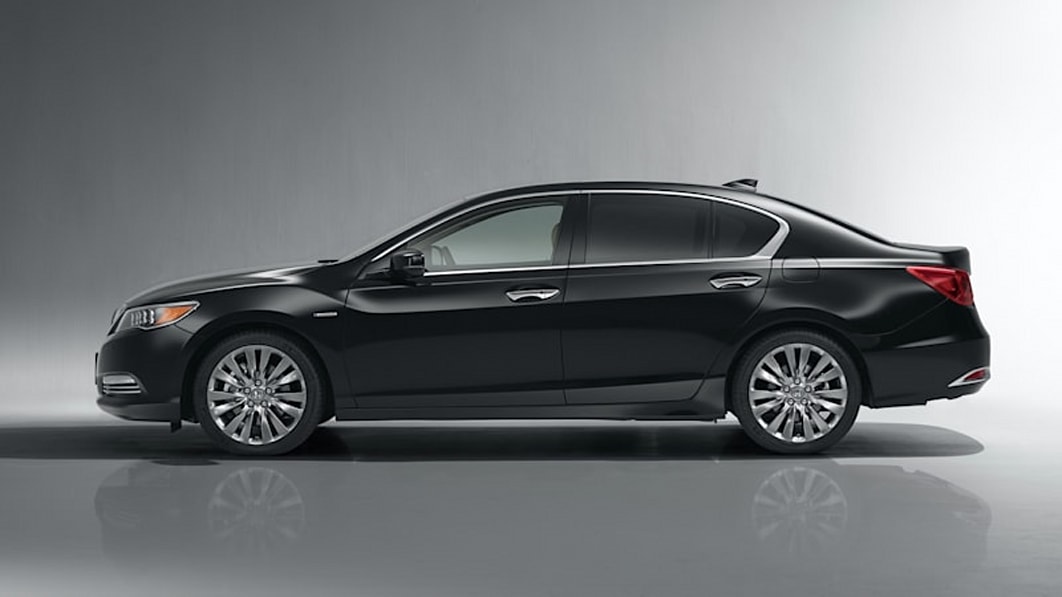Self-driving cars: Here’s what the autonomous driving levels mean
Your new car may offer Level 2 autonomous driving, but what does that actually mean?

One day, cars will drive themselves. Driving will be a thing of the past, and if the tech industry is to be believed so will traffic and road accidents. All because the autonomous car’s computer brain is more connected and aware than any human driver could be. It’s a prospect that would change the way human beings get around the world.
Modern cars can already do a lot of things autonomously, though they aren’t at the stage where they can truly be called ‘self-driving’. Right now the best autonomous driving systems are only on ‘Level 2’ of the autonomous driving scale. But have you ever wondered what that actually means?
- Here are the best electric cars you can buy right now
- What is Tesla Autopilot? Everything you need to know
- Plus: Apple Car: It looks like Apple just pressed the reset button
What is the autonomous driving scale, and where did it come from?
The autonomous driving scale is made up of six different levels, each describing different levels of automobile autonomy. The higher the level, the less input and oversight is required from a human driver.
The scale was first laid out in 2014 by the Society of Automotive Engineers, and has since been updated in both 2016 and 2018. These levels have also been adopted by the U.S. Department of Transportation, and have become the way the auto industry defines just how autonomous a particular car or driving system is.
What are the different autonomous driving levels?

Currently there are six levels of autonomous driving, ranging from ‘Level 0’ (zero autonomy) all the way to Level 5 — absolute full autonomy. Each level represents a new stage of autonomous driving ability, so let’s break down what they are, and what they mean for you, the driver.
Level 0 is exactly what it sounds like. It’s a car that has absolutely zero autonomy, and all driving has to be taken care of by the driver. This level also includes cruise control, provided it’s the old-school cruise control where the driver still has to control braking and acceleration.
Level 1 is the most common form of autonomy out there right now, and involves the driver and the car sharing control over the road. The most recognizable Level 1 autonomous feature is adaptive cruise control, where the car has control over acceleration and braking, but the driver remains in control of the wheel. The car ‘sees’ the traffic around it to alter its speed accordingly.
Get instant access to breaking news, the hottest reviews, great deals and helpful tips.
Level 1 autonomy can also include steering assistance, but only when the driver maintains control over the speed — like auto parking. Other common features include automatic emergency braking systems, blind spot monitoring, and lane keeping alarms that alert you if you start to stray out of your designated lane.
Level 2 autonomy is where the car is able to take full control, and handle acceleration, braking and steering at the same time. This level is often referred to as ‘hands-off’ autonomy, since the driver doesn’t need to do very much work.
Unfortunately Level 2 autonomy can be confusing for some people, who assume the car is fully autonomous because it’s able to steer and control speed at the same time. However automakers have warned against this, including Tesla who have said its Autopilot system could do “the wrong thing at the worst time”. This is why an attentive driver is still needed, ready to take control at any time.
Level 2 is currently the highest level of autonomy you can get in a commercial car. Tesla’s Autopilot, GM’s Super Cruise, and Nissan’s ProPilot are all examples of Level 2 autonomous driving systems.
Level 3 is also known as an ‘eyes off’ system, where a person sits behind the wheel, but can take their eyes off the road ahead while the car does all of the actual driving. Level 3 autonomy allows the car to make situational decisions, but a driver must still be alert and ready to take over where necessary.
Level 3 autonomy isn’t widely available in road cars, because it sits in a legal gray area. In fact there are only a handful or Level 3-capable cars, like the new Honda Legend, and even those are only available in limited quantities in select regions. Audi even killed off a Level 3 autonomous driving system in the new A8, simply because the technology was advancing faster than legislators could keep up.
Level 4 is where things get really interesting, and is sometimes referred to as ‘mind-off’ autonomy. In other words, the car is so capable that the driver isn’t even needed. If they want to fall asleep, like all those Tesla owners, they can. However there are some caveats.
Level 4 autonomous systems will only be allowed to operate within certain places, like geofenced locations or traffic jams. More importantly, it must also be able to get itself to a safe location if these conditions aren’t met, or in emergencies, and the driver isn’t responding. The driver can still take manual control if needed.
Most of the cars utilized in self-driving car trials have Level 4 autonomy, since they drive around independently but still have a human driver on hands just in case they’re needed.
Level 5 autonomy is the end-goal, where the car is capable of doing all the driving with no option for a human driver to take over. These cars likely won’t have steering wheels or pedals, and should be able to go wherever they please.
There are no Level 5 autonomous vehicles out in the world right now, and we’re still a ways off from actually putting them out on the roads. More to the point, there’s still no legal framework in the U.S. or elsewhere that would make it legal to even sell them to the general public.
When can we expect something better than Level 2?

The main issue with autonomous cars is that there are huge legal implications for their use. Right now, a Level 2 system requires an attentive driver who can take over at a moment’s notice — which makes the driver liable for what the car does.
Take autonomy a step further, to a stage where the driver doesn’t need to pay attention, and the car is doing the brunt of the driving, and things become a lot more complicated. Who is liable, the driver or the manufacturer who programmed the car?
Likewise there’s no legislation governing the use of anything Level 3 and above by the general public. Autonomous vehicle trials do take place, but only with approval from the relevant government authority. That’s the reason behind Audi killing the Traffic Jam Pilot feature in the A8, which would have upgraded the car to a Level 3 autonomous system.
Of course the legalities of autonomous driving systems aren’t the only obstacle. Steve McEvoy, Vice President of Automotive at Expleo, pointed out that infrastructure is going to be key.
“A big part of the puzzle we can't overlook is that the wider infrastructure that needs to be in place for fully autonomous vehicles,” McEvoy said. “Many roads have not been mapped with the level of accuracy for door-to-door travel.”
“Likewise, think of how patchy mobile signals can get out on country roads – it's those same communications networks that are so important to driverless systems. What may work on the highways of California isn’t quite ready for the B-road networks of the UK and similar the world over.”
Of course this hasn’t stopped automakers from making grand promises about the future of autonomous cars. Volkswagen has claimed that the ID.Buzz van will offer Level 4 autonomy by 2025, while the Apple Car, which is said to be completely autonomous, is also rumored to arrive around that same time.
Tesla CEO Elon Musk is also infamous for overpromising where self-driving cars are concerned, and more recently declared that the $25K Tesla will be “fully autonomous.” Musk even went so far as to ask Tesla employees whether the car should be built with pedals and a steering wheel or not.
We’ll just have to see what automakers have in mind, and whether governments will be able to get their act together and figure out the specifics of having more advanced autonomous vehicles on the roads.
Next: How do self-driving cars work? Everything you need to know.

Tom is the Tom's Guide's UK Phones Editor, tackling the latest smartphone news and vocally expressing his opinions about upcoming features or changes. It's long way from his days as editor of Gizmodo UK, when pretty much everything was on the table. He’s usually found trying to squeeze another giant Lego set onto the shelf, draining very large cups of coffee, or complaining about how terrible his Smart TV is.
